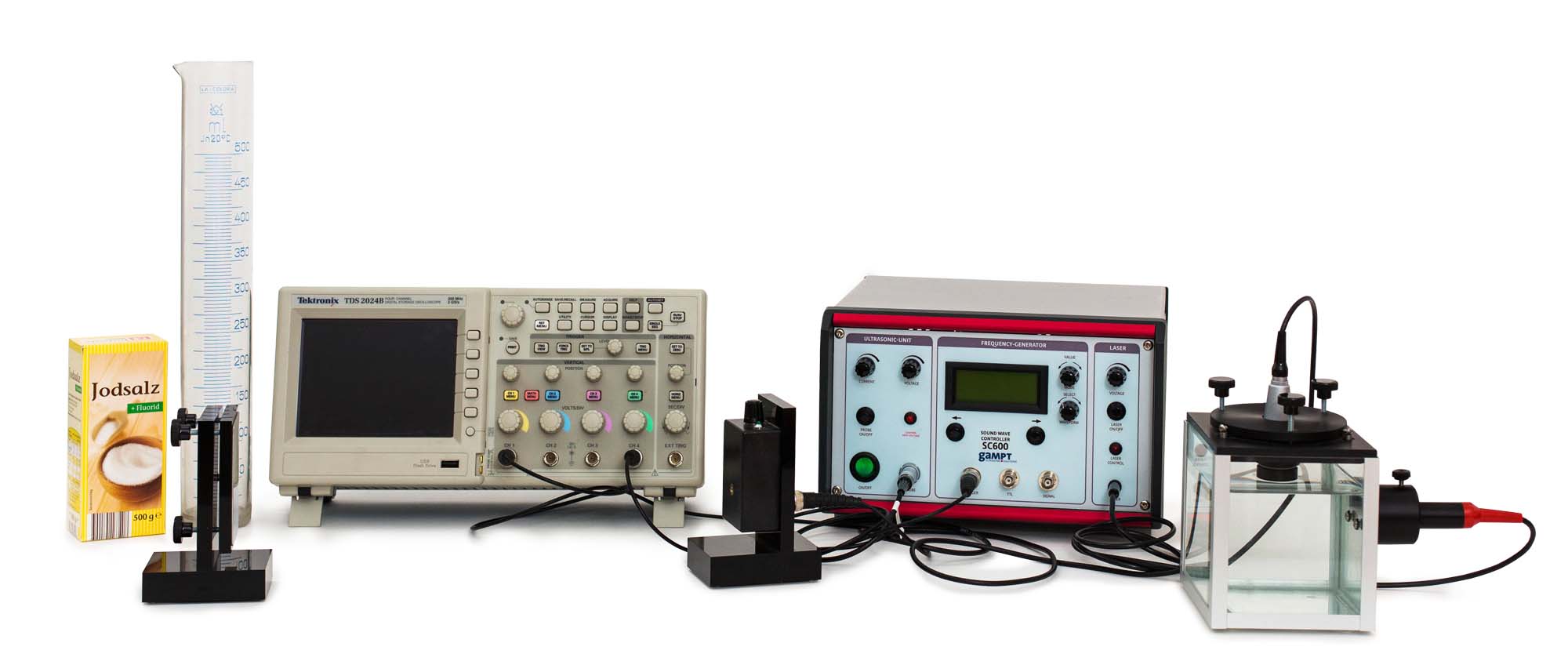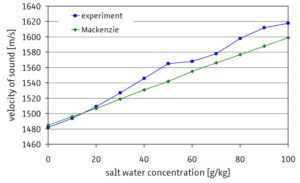Article No. VK-IND04
IND04 Concentration measurement with resonance cell
Investigation of the dependence of the sound velocity in a salt solution upon the concentration
- Subject matter of the experiment
- Theoretical and practical aspects of the experiment
- Results
- Equipment
- Related Experiments
The dependence of the sound velocity in a salt solution upon the concentration is investigated. The sound velocity in a resonance cell is measured with the aid of the acousto-optical effect of the diffraction of laser light at a standing ultrasonic wave.
Keywords: Sound propagation, Debye-Sears effect, standing sound wave, optical diffraction grating, wavelength, sound frequency, sound velocity, amplitude modulation, resonance cell
In electrolytes, when there is an increase in concentration there occurs a reduction of compressibility and an increase in the density. This leads to a concentration-dependent increase in sound velocity. The sound velocity in the electrolyte can be determined by means of the diffraction of light at a standing ultrasonic wave (PHY17). The interference maxima that are produced in the diffraction are amplitude-modulated as a result of the periodic change of the wave. The amplitude modulation takes place at twice the frequency of the standing wave. A change in the sound frequency influences the modulation amplitude. This is always biggest when the distance h between ultrasonic probe and reflector corresponds to a multiple m of the half sound wavelength. The sound velocity c in the medium can be calculated as follows: c = 2 h Δf / Δm (Δf: frequency difference between maximum modulation amplitudes). The measurement values are compared with values that are calculated by means of the empirical formula for sound velocity in sea water of Mackenzie (JASA, 70, 807-12).
In the diagram, the measurement values and the comparative values calculated in accordance with Mackenzie’s formula are entered. In the investigated concentration range, a substantial increase in sound velocity can be observed as the salt concentration is raised. In the range of 0-30 g/kg, the measurement values correspond closely to the theoretical values according to Mackenzie.
| Description | |
|---|---|
| 20100 | cw generator SC600 |
| 20200 | Debye-Sears set |
| 20302 | Adjustable reflector |
| 20303 | Photodiode receiver |
| – | Oscilloscope, common salt, magnetic stirrer, thermometer (not included) |

